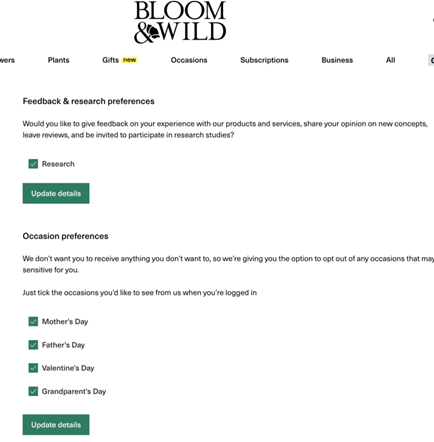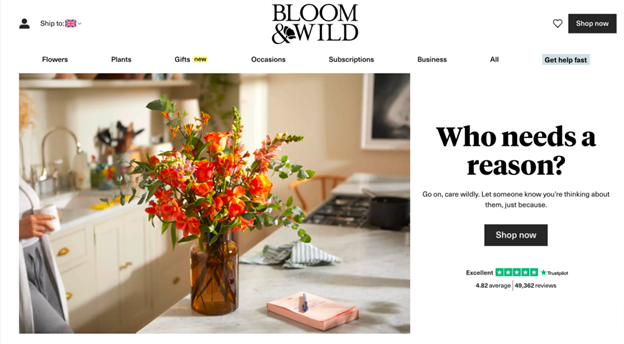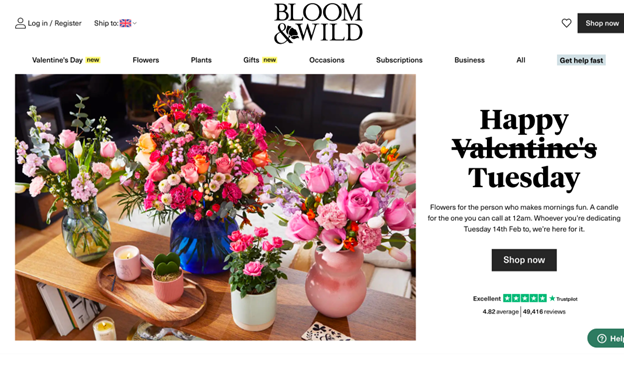How to utilize compassionate marketing in your email campaigns
We all know that sales are important - that's partly the reason why we’re here right? To improve sales and increase year-on-year revenue. But what about community? We’re in an era where knowing a company’s values, having a sense of belonging, and feeling connected are key drivers for many people.
Shifting your marketing mindset to look beyond this quarter’s goals can be difficult. However, a brand only exists when it has customers. Marketing is not about squeezing as much money as possible from them in the short term but building relationships that ensure loyalty through the years to come.
I recently conducted a poll on LinkedIn asking fellow marketers whether compassionate tactics should be extended beyond Mother’s Day, ultimately giving subscribers the option to opt-out of social holidays that could cause distress, like Valentine’s Day. 73% agreed that sensitivity should be applied.

Brands such as Liberty London, Papier, and Pandora have already adopted this approach to their 2023 campaigns. We are in an age where the customer has greater choice than ever and building longevity takes loyalty, which cannot be bought’ it’s earned.

Loyalty from the standpoint of a consumer is staying with a brand that acknowledges their needs whilst communicating their values. An algorithm won’t do this, but the efforts of establishing human connections will.
“McKinsey reported that ‘now more than ever consumers shop in line with their values’. In fact, two out of three consumers told researchers that social values now shape their shopping choices. 68% of customers say they would be loyal to a brand if it shared the same values as them (LoyaltyLion)”.
This goes to show the importance of building loyalty with your customers by adopting compassionate tactics that display your values and puts the customer’s needs ahead of the business. Forrester coined a new term ‘customer obsessed;’ it's an elevated take on ‘customer centric.’ Essentially, Forrester believes that pivoting the entire business framework to meet the needs of the customer via a ‘customer obsessed’ framework will yield 700% ROI over a 12-year period.
However, compassionate marketing can take several forms and go beyond the opt-out function.
Let’s keep the theme of Valentine’s Day for this example. Why just omit email sends when you can personalise the entire experience?
Bloom & Wild, an online florist, is a pioneer when it comes to compassionate marketing. It understands the value of putting its customers first, using technology that extends beyond opting-out of the email. When logged in, customers who do not want to hear about Valentine’s Day and Mother’s Day receive a customised online experience. The homepage, navigation, and product pages reflect their preferences.

Here is the landing page with preferences of Valentine’s Day removed. As you can see the heading ‘Valentine’s Day’ has been omitted from the homepage navigation. This same tactic is also applied for those who have opted out of Mother’s Day and other sensitive occasions.

Here is the landing page for those who are happy to hear about Valentine’s Day and other sensitive occasions.

But how can you make an even greater impact? By creating a collective of brands that are dedicated to putting the needs and wellness of their customers first.
Called the ‘Thoughtful Marketing Movement’ Bloom & Wild has created a group that houses a community of over 170 businesses including Braze, Wagamama, and Neom to name a few. The movement is a space for marketers to discuss, inspire, educate, and help each other find ways to be more thoughtful together.
HubSpot reported that 50% of consumers have left a brand they were loyal to for a competitor that better met their needs. If, as a marketer, you can take the approach of thoughtfulness and apply it within a wider marketing context it will help grow your loyalty index.
Another area that will be positively impacted is your unsubscribe rate. I was recently asked ‘how do you measure customer satisfaction?’ of course you have your NPS and CSS scores that provide clear indicators of how your customers feel, however, the most immediate tell sign is the unsubscribe rate. It’s a hard and fast metric that is governed mainly by how the subscriber ‘feels’ about your communication, content, and your brand. So if one of the components of retaining customers is to simply meet them at a place of humility and understanding, then compassionate tactics should be widely adopted to prevent avoidable opt-outs.
Compassionate marketing doesn’t have to be a once-a-year thing. It can be a strategy adopted just as organically as a lifecycle campaign. I’m not saying to forgo sales altogether, but simply to apply thoughtful tactics throughout the customer lifecycle. It will reinforce the brand-to-customer relationship, thereby increasing loyalty and sales over time.
 Photo by Tim Marshall on Unsplash
Photo by Tim Marshall on Unsplash

 How to resolve AdBlock issue?
How to resolve AdBlock issue? 
 OI member Adeola Sole is an experienced CRM and email marketing consultant with a demonstrated history of working with luxury e commerce brands. Skilled in sales, strategy, life-cycle processes, data management with a splash of digital. She can help you establish and grow your database base well as optimise your email communications and increase retention through customised, targeted campaigns.
OI member Adeola Sole is an experienced CRM and email marketing consultant with a demonstrated history of working with luxury e commerce brands. Skilled in sales, strategy, life-cycle processes, data management with a splash of digital. She can help you establish and grow your database base well as optimise your email communications and increase retention through customised, targeted campaigns.